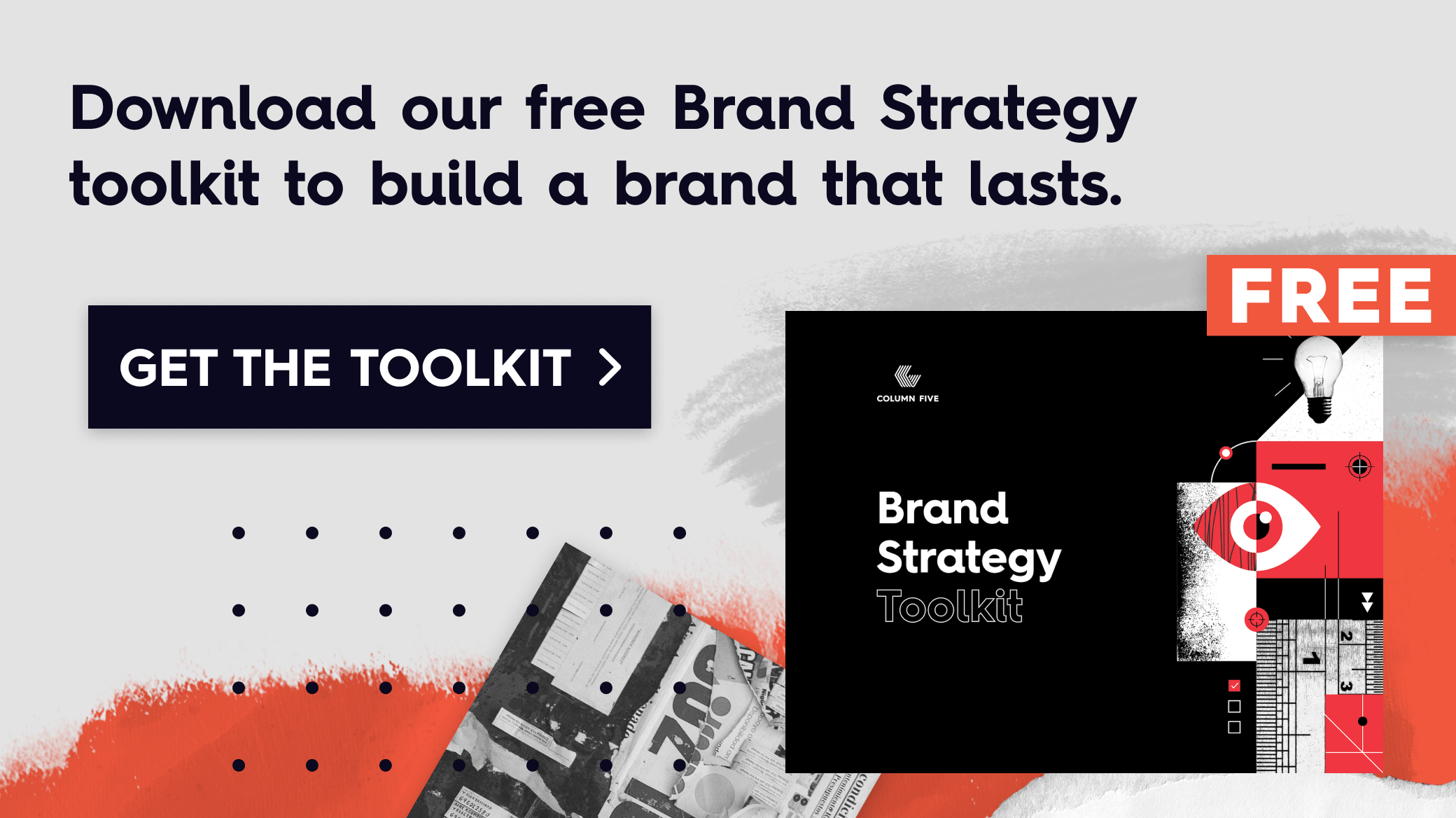I often talk about why investing in your brand is the only surefire path toward standing out and succeeding in the marketplace nowadays. As every industry becomes more overcrowded and consumers demand more from companies, building a unique brand is crucial to compete. But your brand means different things to different people. Consumers, employees, and peers—they all view and experience your brand in their own unique ways, and this experience is also often inconsistent across groups. The truth is if you want to have a truly successful brand (and compete well in all spheres), you need to pursue brand singularity and deliver a cohesive, consistent experience to everyone who interacts with your company.
And if you haven’t even heard the term “brand singularity,” then today is the day you’ll learn how to future-proof your business—and why brand singularity is the only way to do it.

What Is Brand Singularity?
Let’s break it down with a few definitions.
- Brand: The perception of who you are as a company. Ultimately, it’s what people think, say, and feel about your company.
- Singularity: This is the state, fact, quality, or condition of being singular (aka oneness).
- Brand singularity: When a company (aka brand) presents itself to all in a consistent manner, thus allowing a consistent brand experience for everyone.
But isn’t that what a regular brand is? Well, it’s what it should be. But most companies have not achieved brand singularity because they are stuck in the old paradigm of only really caring what customers think, say, and feel about them.
Why Does Brand Singularity Matter?
There are many trends driving the need for brand singularity, yet many companies are getting left behind. If you aren’t aware of how these issues can and will affect your brand going forward, here’s what you need to know.
1) Branding is no longer about the consumer’s experience alone.
For years, branding has only been used to curry favor with customers—and maintain it at all costs. Traditionally, all that mattered was what customers thought about a brand. In this context, companies could project whatever image they wanted to the outside world, and then run the company however they wanted behind closed doors. (Many companies did this and were crucified when their internal practices, including how they treated their employees, did not align to public projection.)
But in this new era, consumers are not so easily satisfied. Standards have drastically changed, and they are far more invested in a brand’s all-around reputation, relationships, business practices, etc.
Purpose-driven consumers, who choose products and brands based on how well they align to their values, now represent the largest segment (44%) of consumers.
—2022 IBM Institute for Business Value Consumer Research Insights
Now, it’s not just about what consumers think about your logo. Their perception of your product/service, employees, values, and actions—inside and outside your company walls—matter most. It’s as if, and for good reason, we’ve all internalized Martha Beck’s famous quote, “how you do anything is how you do everything,” and now use this as part of our filter to determine who we want to give our business to.
2) Hiring is more competitive than ever.
In the wake of the great resignation, companies are desperate to attract and retain the best and brightest. But, just like the consumer shift, employees now have increasingly higher standards for the brands they work for. Thus, cultivating a strong and desirable employer brand is more important than ever.
Building an employer brand that aligns with your customer brand is a golden opportunity to differentiate yourself in a highly competitive marketplace.
A decade ago there was no single, reliable way to know what it was like to work at a company, beyond talking one-on-one with a friend or acquaintance who worked there. Nowadays, we have LinkedIn, Glassdoor, and plenty of other social platforms that make it easy to share and gather insight about a workplace. (In my humble opinion, I think this is good in that it has led to a lot of willing and unwilling accountability.)
91% of candidates seek out at least one online or offline resource to evaluate an employer’s brand before applying for a job.
—HubSpot Employer Brand Research 2020
Not only that but the highest-paying brands are not always considered the most desirable employers these days, as employees prioritize things like company purpose, vision, mission and values over a higher-paying salary. Those deep-pocket brands that traditionally relied on their ability to pay the highest salary will soon be eclipsed by smaller competitors with more holistic brands built on strong values. (Interestingly, we’ve worked with many smaller brands that have been able to go head-to-head with bigger, wealthier companies to hire talent based on their employee value proposition alone.)
56% of adults place culture above salary when it comes to job satisfaction.
—Glassdoor’s Mission & Culture Survey 2019
Because most brands have only focused on their consumer-facing brand, they haven’t invested much (if anything) in their employer brand. This is a huge error. Investing in your employer brand puts you in a position to be able to actively attract the best in your industry—not simply hope the right people will apply. It also signals to your current employees that you are invested in their satisfaction and how they experience their day-to-day life. (This is especially true in remote-first environments where employees can feel neglected.) Frankly, investing in your employer-brand is also a forward-thinking step that shows you are a savvy and self-aware brand—something every employee wants to see.
Ultimately, no matter your company, size, or industry, your primary audience consists of consumers and employees/potential employees. If you aren’t intentionally communicating and finding ways to connect with both, you’re already behind.
3) Investing in every facet of your brand is investing in your company.
Winning brands provide a consistent, cohesive experience across different touchpoints and audiences.
Unfortunately, many companies feel little pressure to re-evaluate their brand through this lens, especially when it comes to intentionally designing their employee experience. Of course, your customers matter. But in a lot of ways, your people are your brand–especially post-purchase. Customers may buy/use your product, but what happens when they need your help, or just have a question? Your employees’ customer service is customer retention.
89% of consumers are more likely to make another purchase after a positive customer service experience.
—Salesforce State of the Connected Consumer
Additionally, more and more leaders are focused not on customers or employees but on shareholders’ opinions. But if you build a brand that takes care of your employees, they take care of your customers, and that revenue satisfies your shareholders. If you want a healthy company, you need a healthy, complete brand.
Brand singularity is the way.
The most successful companies with the best brands know this; they take what customers and employees think, say, and feel very seriously. For example, consider Nike and Netflix. Both companies have approached branding holistically for years. Nike is known for its clear and transparent values. Netflix was a pioneer of the unlimited vacation policy. It’s no surprise that these brands tend to have the most loyal customers, as well as employees. Looking back, it’s clear they understood brand singularity before this term came to the forefront.
4) The definition of “brand” is expanding.
Whereas we’ve talked about how the consumer brand and employer brand are both a part of your overall brand, more elements are emerging. Depending on your unique circumstances, these additional factors can greatly influence how people perceive your brand. Consider things like your…
- CEO brand: Think about how people perceive your CEO. Many folks say the CEO plays a key role in how folks relate to the company and its products, including whether or not they want to work at your company or buy from you. For example:
- Elon Musk is a visionary CEO. As the face of Tesla, he famously spends no money on advertising but serves as a platform/megaphone through which his company’s news is shared.
- Tim Cook is widely considered a great CEO, but in a lot of ways, much of his work is about carrying on Steve Jobs and Steve Wozniak’s vision. He doesn’t shy away from certain media attention, but he doesn’t seem to seek it out either. And in many cases, he tends to opt for silence.
- Investor brand: How do investors perceive your brand? This can mean different things to different companies in different stages.
- For a start-up, this would likely be relevant in 1-1 settings.
- For a publicly traded company, this is more a matter of how you are perceived by shareholders.
While I am mainly focusing on brand singularity by blending your consumer and employer brand, these are important things to at least be aware of.
How to Create Brand Singularity and Win Your Market
Companies that embrace the concept of brand singularity early and aggressively will out-shine, out-hire, and out-smart their competition at every level. If you’re ready to do it yourself, here are the key ways to make it happen.
- Establish your brand heart. People care about your principles, so document your purpose, vision, mission, and values—and create content that showcases them. Start with our guide to find your brand heart, and see how some of the best brands bring their values to life.
- Flesh out your brand expression. Your brand heart and strategy represent the foundation of your brand, but core elements like your messaging and visual identity are the outputs that express your brand to the world. Ensure that you are telling a consistent, cohesive story by strengthening your brand story and bringing it to life visually.
- Build an employer brand that pulls people in. One of the most significant ways to do this is to cultivate a strong company culture. Use our handy employer branding toolkit to assess every aspect of your employer brand and ensure you’re telling the right stories about who you are. Note: You need to ensure that your employee brand is not just a perception but a lived and experienced thing. Remember: The more you create positive experiences for your employees, the more they create them for your customers.
- Be consistent. Good branding is all about consistency in the way you look, sound, speak, and deliver experiences. Review your buyer journey—and employee journey—to spot gaps, identify opportunities to improve, and create a seamless experience for everyone who is interacting with your brand.
- Be flexible. Companies that embrace brand singularity effectively will change the world, but they must be open to learning, growing, and experimenting. Additionally, you need to understand that a “brand” is an operating system—not just a design system. It is forever shifting and evolving, but if you have a strong brand foundation and a holistic approach, you will be able to grow in the right direction and adapt your brand accordingly.
The biggest first step, of course, is simply committing to take your whole brand seriously. You may not build the perfect brand overnight, but you will be better poised to operate, grow, and thrive if you make brand singularity your North Star.
One final note: This work can be challenging and all-encompassing, but it is 100% worth it. If you are ready to embark on a new brand journey but need support and guidance, consider bringing in the right partner. See our tips to find the right agency for you, find out what it’s like to develop a brand with Column Five, and reach out if you’re ready.





